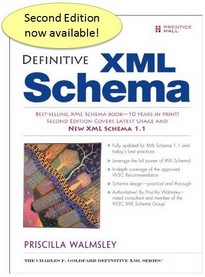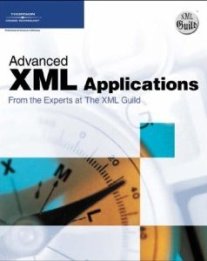fo:page-sequence
Specifies how to create a (sub-)sequence of pages within a document; for example, a chapter of a report. The content of these pages comes from flow children of the fo:page-sequence. Specifies that only the children of fo:markers that are descendants of any fo:flow within the containing fo:page-sequence may be retrieved by this fo:retrieve-marker.
Element information
Namespace: http://www.w3.org/1999/XSL/Format
Schema document: fo.xsd
Type: Anonymous
Properties: Global, Qualified
Content
- Sequence [1..1]
- fo:title [0..1]Associates a title with a given page-sequence. This title may be used by an interactive User Agent to identify the pages. For example, the content of the fo:title can be formatted and displayed in a "title" window or in a "tool tip".
- fo:folio-prefix [0..1]A static prefix for the folio numbers within a page-sequence.
- fo:folio-suffix [0..1]A static suffix for the folio numbers within a page-sequence.
- fo:static-content [0..*]A sequence or a tree of formatting objects that is to be presented in a single region or repeated in like-named regions on one or more pages in the page-sequence. Its common use is for repeating or running headers and footers.
- fo:flow [1..*]A sequence of flow objects that provides the flowing text content that is distributed into pages.
Attributes
| Name | Occ | Type | Description | Notes |
|---|---|---|---|---|
| format | [0..1] | fo:string | A sequence of tokens where each token is a maximal sequence of alphanumeric characters or a maximal sequence of non-alphanumeric characters. This property is defined in . | from group fo:format |
| grouping-separator | [0..1] | fo:character | The character used as a grouping (e.g. thousands) separator; the default value is the comma character (,). This property is defined in . | from group fo:grouping-separator |
| grouping-size | [0..1] | fo:number | The size (normally 3) of the grouping. For example, grouping-separator="," and grouping-size="3" would produce numbers of the form 1,000,000. This property is defined in . | from group fo:grouping-size |
| letter-value | [0..1] | Anonymous | Disambiguates between numbering sequences that use letters. In many languages there are two commonly used numbering sequences that use letters. One numbering sequence assigns numeric values to letters in alphabetic sequence, and the other assigns numeric values to each letter in some other manner traditional in that language. In English, these would correspond to the numbering sequences specified by the format tokens a and i. In some languages, the first member of each sequence is the same, and so the format token alone would be ambiguous. A value of alphabetic specifies the alphabetic sequence; a value of traditional specifies the other sequence. A value of "auto" corresponds to the XSLT definition for when the attribute is not specified. This property is defined in . | from group fo:letter-value |
| country | [0..1] | Anonymous | The country to be used by the formatter in language-/locale-coupled services, such as line-justification strategy, line-breaking, and hyphenation. | from group fo:country |
| flow-map-reference | [0..1] | fo:name | The flow map to be used for assigning flows to regions within the page-sequence. | from group fo:flow-map-reference |
| language | [0..1] | Anonymous | The language to be used by the formatter in language-/locale-coupled services, such as line-justification strategy, line-breaking, and hyphenation. | from group fo:language |
| id | [0..1] | fo:id | An identifier unique within all objects in the result tree with the fo: namespace. It allows references to this formatting object by other objects. | from group fo:id |
| index-class | [0..1] | fo:string | Associates an index class with a formatting object that also has an index key specified. | from group fo:index-class |
| index-key | [0..1] | fo:string | Associates an index key with the formatting object on which it is specified. | from group fo:index-key |
| initial-page-number | [0..1] | Anonymous | The initial folio number to be used in this page-sequence. | from group fo:initial-page-number |
| force-page-count | [0..1] | Anonymous | Imposes a constraint on the number of pages in a page-sequence. In the event that this constraint is not satisfied, an additional page will be added to the end of the sequence. This page becomes the "last" page of that sequence. | from group fo:force-page-count |
| master-reference | [0..1] | fo:name | The names need not be unique, but may not be empty and must refer to a master-name that exists within the document. | from group fo:master-reference |
| reference-orientation | [0..1] | Anonymous | The direction for "top" for the content-rectangle of the "reference-area". This is used as the reference for deriving directions, such as the block-progression-direction, inline-progression-direction, etc. as specified by the "writing-mode" and "direction" properties, and the orientation, placement, and tiling of the background. | from group fo:reference-orientation |
| writing-mode | [0..1] | Anonymous | from group fo:writing-mode |
Used in
- Anonymous type of element fo:page-sequence-wrapper
- Anonymous type of element fo:root
Sample instance
<fo:page-sequence> <fo:title>Any text, intermingled with: <fo:bidi-override>Any text, intermingled with: <fo:block>Any text, intermingled with:... </fo:block> </fo:bidi-override> </fo:title> <fo:folio-prefix>Any text, intermingled with: <fo:bidi-override>Any text, intermingled with: <fo:block>Any text, intermingled with:... </fo:block> </fo:bidi-override> </fo:folio-prefix> <fo:folio-suffix>Any text, intermingled with: <fo:bidi-override>Any text, intermingled with: <fo:block>Any text, intermingled with:... </fo:block> </fo:bidi-override> </fo:folio-suffix> <fo:static-content> <fo:block>Any text, intermingled with: <fo:block>Any text, intermingled with:... </fo:block> </fo:block> </fo:static-content> <fo:flow> <fo:block>Any text, intermingled with: <fo:block>Any text, intermingled with:... </fo:block> </fo:block> </fo:flow> </fo:page-sequence>



